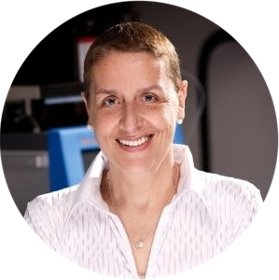Heterogeneity is defined as the state of diverseness. Although greatly appreciated as a unique part of human nature, it leads to immense unpredictability when treating human disease. Inter-patient heterogeneity is well studied where each patient responds differently to a particular therapy. However, intra-patient heterogeneity is under-recognized where individual disease sites within a patient respond differently to the same therapy at different times.
Intra-patient heterogeneity can be broken down into two components, spatial and temporal. Spatial heterogeneity is observed when the response to a particular treatment varies based on the location of the disease sites. Temporal heterogeneity is observed when the same disease site responds differently to the same treatment at various times during a treatment cycle. A full grasp of intra-patient heterogeneity requires a tool that provides a comprehensive insight into a patient’s spatial and temporal response dynamics. There are two distinct challenges in acquiring that insight. The first challenge is quantifying the spatial and temporal heterogeneity in every patient. The second challenge is deciphering the manner in which clinicians can use that information to improve patient outcome or analyze the efficacy of drug candidates in clinical trials.
AIQ Solutions has a software technology platform, driven by artificial intelligence, that can robustly quantify spatiotemporal heterogeneity of treatment response and pharmacodynamic effects. This technology easily addresses the first challenge as it utilizes scans of different imagining modalities and tracers to measure treatment response in every disease site within a patient, at specific times. This measurement is precise and can be viewed for every single disease lesion over time in bone as well as soft tissue. The technology not only monitors the number and volume of each disease lesion at different time intervals, but it also classifies each lesion as responsive, stable, or resistant at each time point.
Multiple studies have demonstrated that resistant lesions have a larger impact on disease burden than responsive lesions, where only a few resistant lesions can drive patient outcome. Therefore, the importance of early identification of resistant lesions is self-evident. To address the second challenge, AIQ technology identifies resistant lesions and pinpoints their exact loci. This has two benefits for a clinician. One, is the ability to consider alternative localized treatment, specific to those resistant lesions. Two, is the ability to perform directed biopsies to discover the biological drivers for the resistance through a genomic and/or proteomic analysis. Studies have also shown that early changes in disease burden can predict long term response to therapy. To that end, AIQ technology uses quantification of heterogeneity in treatment response and pharmacodynamic effects to track disease burden and provides clinicians early access to that important information. The technology takes this premise to the next level with its novel scoring system to further address the second challenge. The AIQ Score* allows for early categorization of a patient as an optimal or a suboptimal responder, hence delivering applicable and actionable intelligence to clinicians. This categorization is made possible through a complex algorithm that includes the heterogeneity in treatment response and pharmacodynamic effects for ALL disease lesions, which differentiates it from other current methodologies.
AIQ’s exclusive technology addresses the heterogeneity challenges in understanding patient treatment response. The technology empowers clinicians to quickly categorize and predict optimal and suboptimal responders. The technology can be used to refine patient inclusion and exclusion criteria as well as identify patients better suited for alternate therapies. The technology also enables the discovery of biological drivers for resistance. AIQ technology provides the necessary critical information that can help improve patient outcome and evaluate efficacy in clinical trials….no imaging analysis is complete without AIQ!



